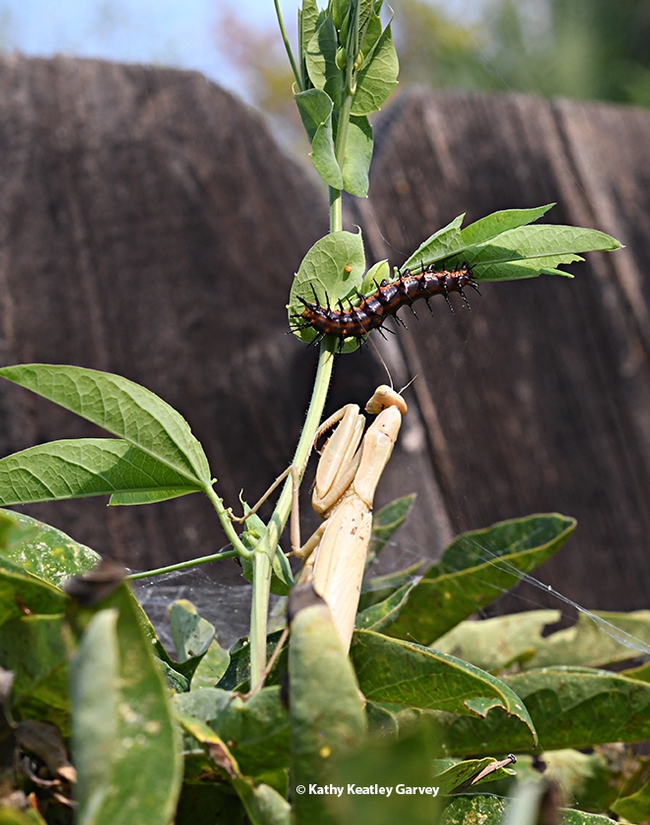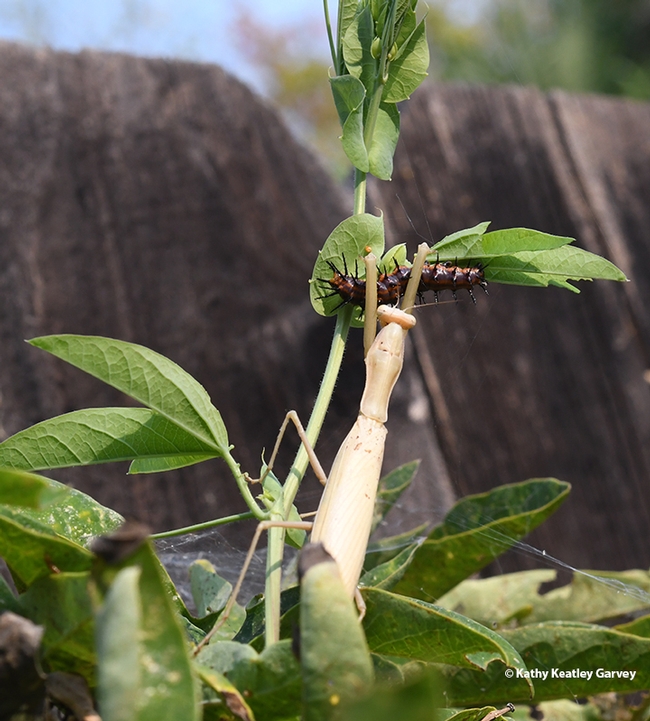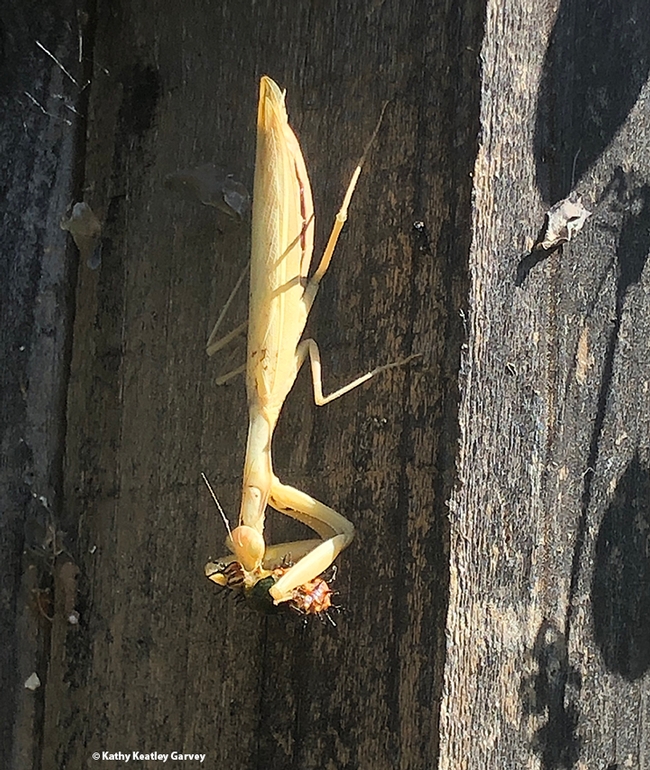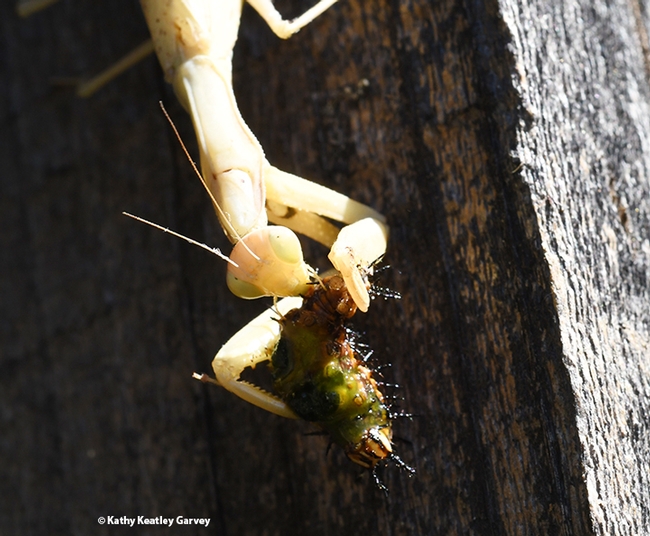Will a praying mantis eat a caterpillar?
Short answer: Yes.
For several days, we've been watching a resident praying mantis, a female Mantis religiosa, hanging out in our patch of Passiflora (passionflower), the host plant of the Gulf Fritillary butterfly, Agraulis vanillae.
We grow Passiflora to attract these spectacular orange butterflies with the silver-spangled underwings. They sip nectar, court, mate and lay their eggs. The eggs hatch into hungry caterpillars and skeletonize our plants, which make us look like "bad gardeners" but the scenario makes for a "great butterfly habitat."
This year there's no "bad-gardener" look.
The caterpillars haven't skeletonized our plants.
Then we see Mrs. Religiosa. She does not look gravid, unlike the other mantids in our garden. She is string-bean thin. Praying mantis expert and UC Davis alumnus Lohit Garikipati figures she has already deposited her egg case, or ootheca, and she'll live another month or two.
Last year the Gulf Frits graced us with so many caterpillars that they were the zucchinis of the garden. Too many, too soon. We donated dozens of the 'cats to the Bohart Museum of Entomology, UC Davis, for its open house, and to youngsters engaged in science projects.
But this year, where are all the caterpillars?
In any pollinator garden, you must expect the pollinators, predators and the prey. Lady beetles and soldier beetles gobble up the butterfly eggs, while birds, spiders and wasps prey on the caterpillars.
We've never seen a praying mantis grab a caterpillar, though. Until now.
Oh, look! A butterfly ballet ever so graceful over the head of string-bean thin Mrs. Religiosa.
She ignores them. Then she spots a caterpillar. Easy catch, right?
Right.
Yes, a praying mantis will eat a caterpillar.
Attached Images:

Gulf Fritillaries flutter over a praying mantis, Mantis religiosa, in a passionflower patch in Vacaville, Calif. (Photo by Kathy Keatley Garvey)

Ahh! The praying mantis finds a non-fluttering target, a Gulf Fritillary munching on the leaves of a passionflower vine. (Photo by Kathy Keatley Garvey)

Gotcha! The praying mantis stretches her spiked forelegs to reach the caterpillar. (Photo by Kathy Keatley Garvey)

Will a praying mantis eat a caterpillar? Yes. (Photo by Kathy Keatley Garvey)

Praying mantis rapidly finishing her dinner. (Photo by Kathy Keatley Garvey)